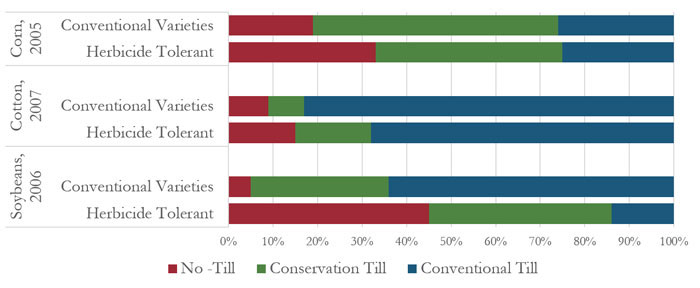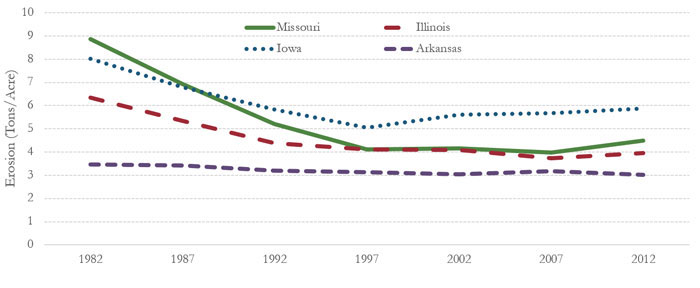Excerpted from the Environmental Impact of Missouri Crop Production report
- Farmers are using less tillage today than in previous years.
- Adoption of less tillage is related to the adoption of herbicide-tolerant crop varieties.
- Less tillage benefits the environment by reducing fuel use, decreasing greenhouse gas emissions, sequestering more carbon, improving soil health and reducing erosion.
Modern crop production uses less tillage and reduces soil erosion relative to crop production in past decades. Prior to the adoption of herbicides, organic practices for weed control were used. Insights into tillage practices over time can be accomplished by comparing organic crop production to current crop production.
Conservation tillage in Missouri rose from 41% in 2001 to 72% in 2014. In 2016, the latest date for which ARMS data exist, indicates that it was at 66%. Tillage can fluctuate from year to year depending on field and environmental conditions.
Conservation tillage acres for corn, cotton and soybeans acres in Missouri

Source: Horowitz, et al. and USDA ARMS
Planting herbicide-tolerant varieties of corn, soybean and cotton has facilitated wider conservation tillage adoption. The graphic below summarizes USDA Agricultural Resource Management Survey (ARMS) data that measured conservation and no-till adoption based on whether acreage had conventional or herbicide-tolerant seeds planted.
Share of herbicide-tolerant or conventional crop planted acreage using tillage practices

Source: USDA. 2014. Genetically Engineered Crops in the U.S.
Several other environmental benefits linked to conservation tillage are decreased soil erosion, improved water retention and reduced soil degradation. Erosion is one measure of agriculture’s environmental impact. From 1982 to 2012, erosion rates on cropland decreased from an estimated 8.9 tons per acre to 4.5 tons per acre.

Source: USDA National Resource Inventory